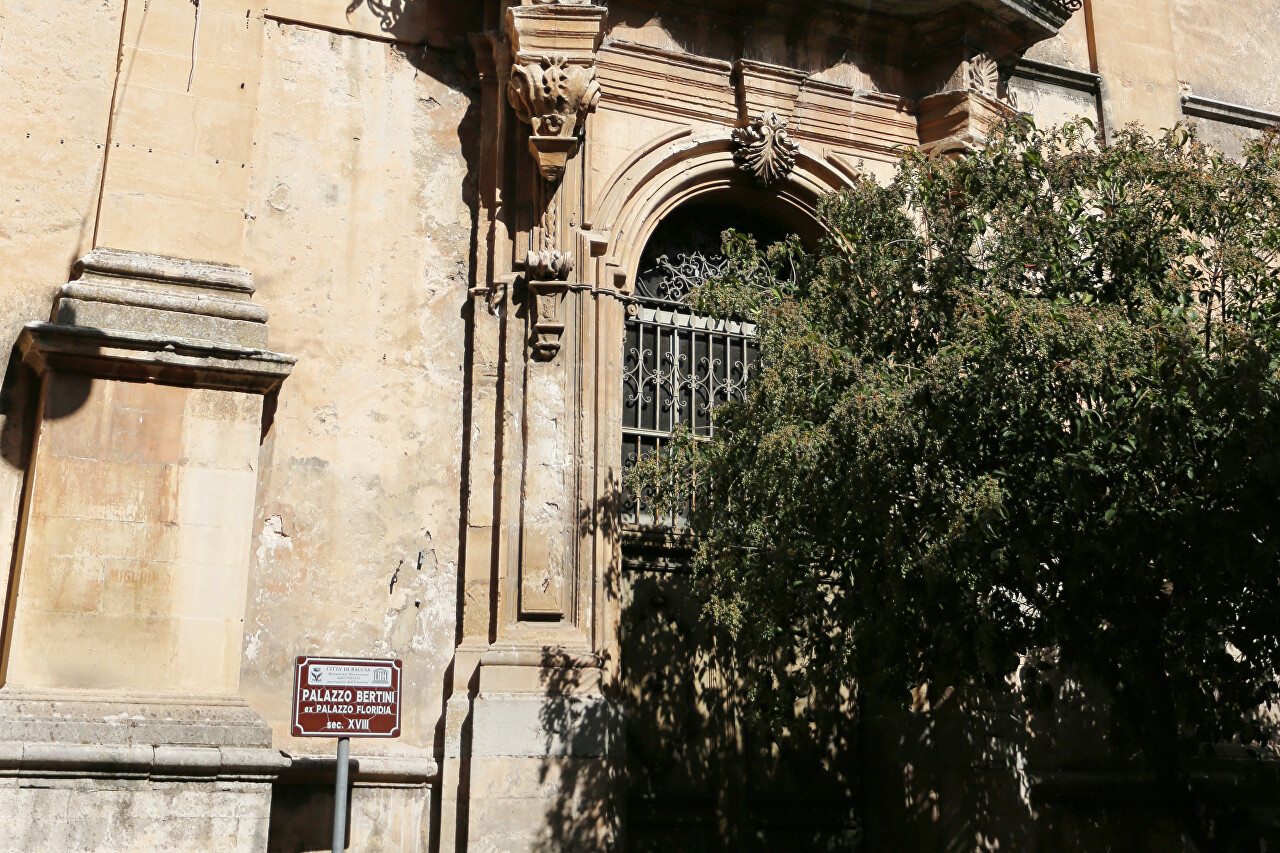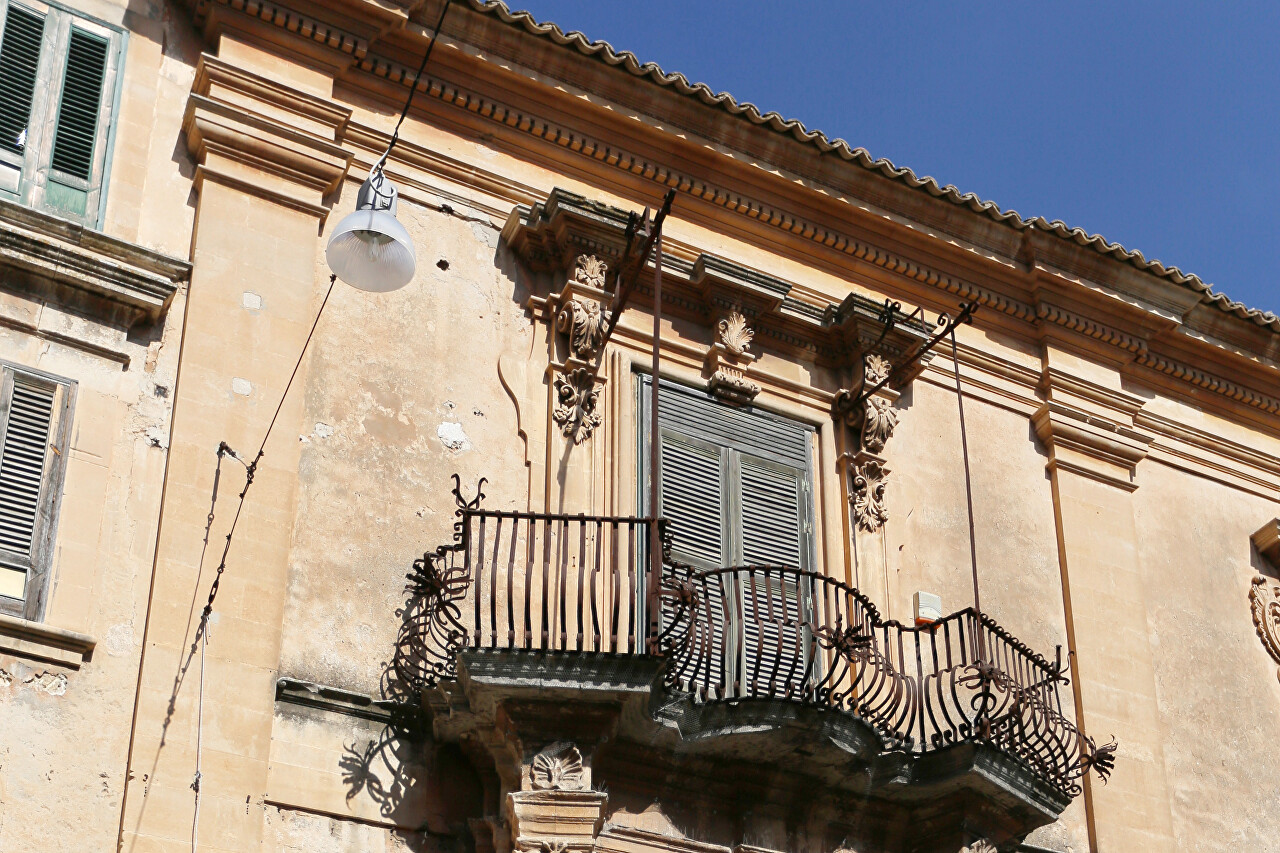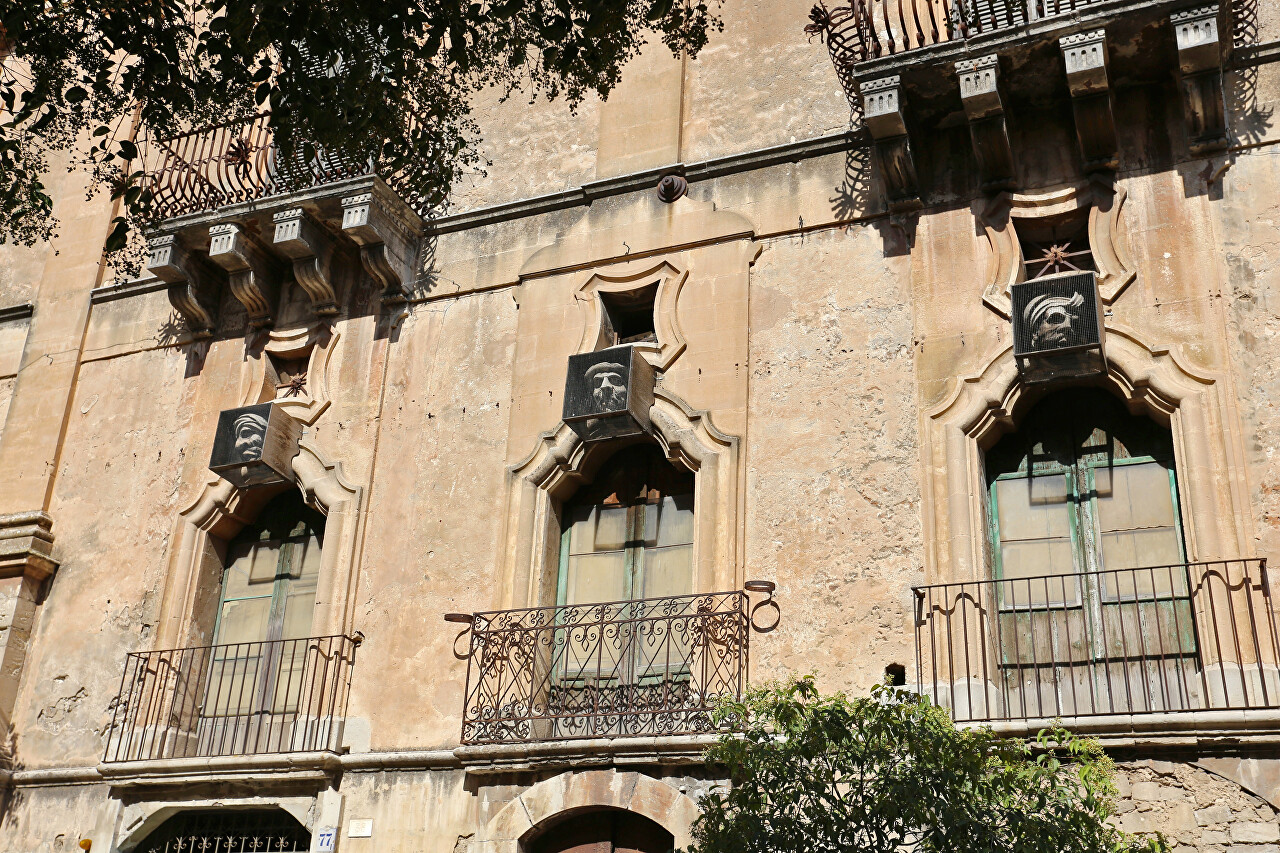Bertini Palace, Ragusa
In the penultimate quarter of Corso Italia is a late Sicilian Baroque building built in the late eighteenth century by the Salvatore Floridia family and originally called Palazzo Floridia. In the second half of the 19th century, the house was bought by the Bertini family, and accordingly changed its name to Palazzo Bertini.

Originally the building had two floors, the windows of the current second floor were at street level and served as the entrance entrances to the rooms. In 1847, during the reconstruction of Corso Italia, the appearance of the building changed - it had a ground floor, previously a basement, and the window niches of the former first floor became small balconies. The main entrance is located on the side of the building. It is framed by two columns that support the balcony.

The balcony is decorated with stucco moldings with floral motifs. The balcony grille is made of wrought iron and also decorated with floral motifs. The other two bars of the upper floor balconies are made in the same style. The interior staircases are made of black stone quarried in the vicinity of Ragusa. The interiors of the palace are richly decorated with stucco.

The most notable decorative element is the three bas-reliefs above the arches of the middle-floor windows (mascheroni, masks). These masks are typical of the Middle Ages and represent three social forces. The central window is decorated with the head of an aristocrat: he has a proud look, he wears a hat with a feather and thick curly hair. A nobleman has the power to do anything, even outside of the rule of law. On the right, we see a merchant from the east. He wears a turban, has a round face and a well-groomed mustache. A merchant is a symbol of someone who can do everything with their money. And finally, a poor man with a disfigured face, a toothless mouth, and a protruding tongue. The beggar symbolizes that two neighboring characters, who have power and money, can not deprive him of anything, because he has nothing. There is also a legend that the masks reflect the separation of the inhabitants of the two parts of Ragusa. Although the Bertini Palace is located in the upper town, it associates itself with the affluent lower part (Ibla) and is the border between the newer, poorer upper quarters. A passer-by coming from the lower city first sees a smiling merchant who looks towards the lower city, and, as you can understand, gives him preference. Next, a passerby sees the haughty face of an aristocrat. This is a warning that you are leaving the noble part of the city. A beggar with his tongue hanging out promises deceit and other troubles in the upper city.

Palazzo Bertini is one of the eighteen UNESCO-listed architectural monuments in Ragusa. Now it is a hotel.